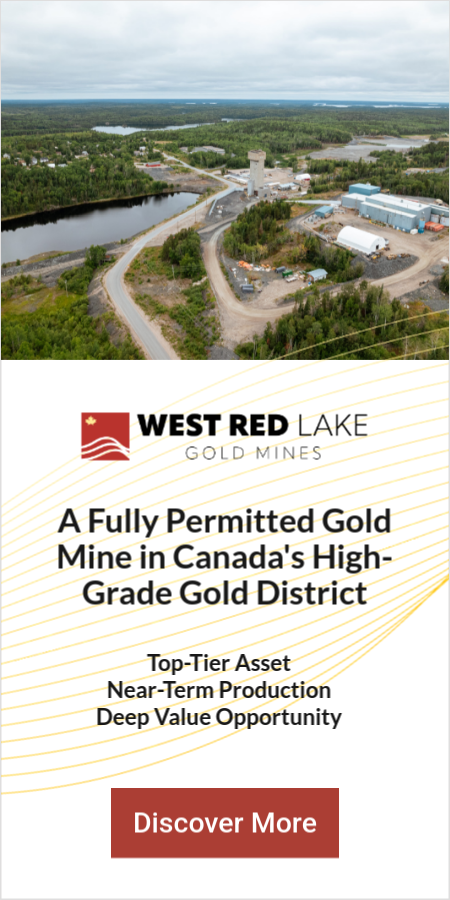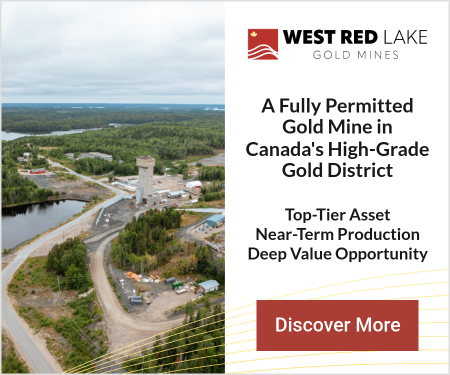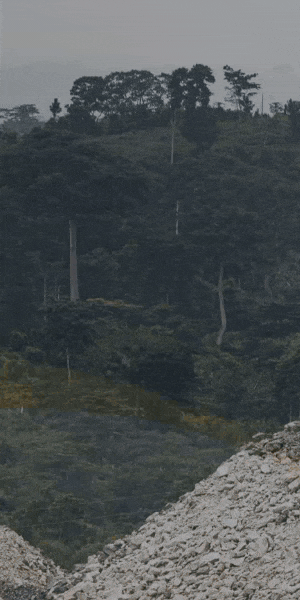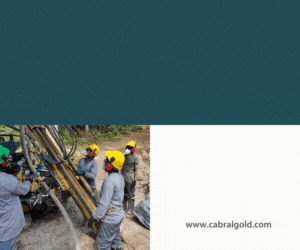Serabi Gold's Profitability Breakout & the Re-Rating Potential Behind Its Growth Inflection Point

Serabi Gold's profitability surge—EPS from $0.14 to $0.50—signals re-rating potential. High-grade Brazilian assets target 100K oz/yr, trading at 3.8x EV/EBITDA discount.
- Serabi Gold demonstrates characteristics of a profitability inflection point, with earnings per share growing from US$0.14 to US$0.50 in one year and EBIT margins expanding from 13% to 38% over the last 12 months.
- Strong insider alignment, with no insider share sales and Chief Executive Officer Mike Hodgson's US$76,000 share purchase at US$1.69 per share, reinforces confidence in the company's scalable 60,000 ounces per annum growth plan.
- High-grade assets in Brazil's Tapajós goldfield, including the Palito Complex and Coringa Mine, underpin strong economics, aided by transformative ore-sorting technology commissioned in December 2024.
- Near-term catalysts such as the Coringa final permit (LI), aggressive exploration drilling, and fiscal 2025 production guidance (44,000–47,000 ounces) support a clear path toward a +100,000 ounces per annum production base.
- Serabi trades at a discounted 3.8x 2025E enterprise value to earnings before interest, taxes, depreciation, and amortization versus 5.7x peer average, presenting potential re-rating opportunity as margins widen and production scales.
Profitability as the New Catalyst for Mid-Tier Gold Growth
The gold sector faces widening divergence between profitable underground producers and high-cost developers. As inflationary pressures persist and capital markets demand tangible returns, investors increasingly reward companies demonstrating scalability, margin durability, and responsible capital deployment. The distinction between marginal producers and those capable of generating sustainable free cash flow at conservative gold prices has become a primary valuation driver.
Serabi Gold represents a case study in how operational discipline combined with grade advantage translates into meaningful profitability. The company's recent financial performance demonstrates characteristics of an inflection point driven by high-grade ore, cost efficiencies, and scalable production. Earnings per share growing from US$0.14 to US$0.50 in one year and EBIT margins expanding from 13% to 38% over the last 12 months represent significant improvements in earnings power.
Mike Hodgson, Chief Executive Officer of Serabi Gold, emphasizes the operational foundation:
"We're generating so much money and even with all the exploration we're doing as much as we can… we can fund all of that through cash flow."
Market Context: Why Profitability Matters More in Today's Gold Cycle
Investors today prioritize projects capable of generating sustainable free cash flow at conservative gold prices. Cost inflation across the sector has eroded the economics of marginal deposits, making low all-in sustaining cost operations with high-grade underground resources more attractive as they demonstrate resilience across commodity price cycles.
Serabi's ability to fund a US$9 million exploration program initiated in January 2025 and Phase 1 capital expenditure estimated at less than US$10 million from operating cash flow represents a competitive advantage in a capital-constrained environment.
Competitive Advantage of High-Grade Underground Mines
High-grade orebodies structurally sit lower on the cost curve due to reduced volume requirements and higher revenue intensity per tonne milled. Serabi's grade profile at Palito (9.9 grams per tonne gold based on April 2025 resource statement) and Coringa (7.0 grams per tonne gold based on April 2024 resource statement) places it firmly in the high-margin segment.
Ore sorting technology amplifies these advantages. At Coringa, ore sorting is forecast to upgrade feed grade from below 6 grams per tonne to above 12 grams per tonne while achieving over 98% waste rejection, reducing haulage costs and tailings volume while increasing plant efficiency.
Brazil's Mining Policy & Investment Environment
Pará State currently offers a favorable environment with an effective tax rate of 15.25% due to development incentives. Infrastructure improvements, including the paving of the federal highway connecting Coringa to Palito Complex approximately 200 kilometers by road, have improved logistics efficiency. Serabi's over 20-year operating track record in the region provides institutional knowledge and community relationships that reduce execution risk.
Serabi Gold's Breakout Financial Performance
Earnings per share growing from US$0.14 to US$0.50 in one year represent a significant increase that fundamentally alters the company's earnings power and valuation framework. EBIT margins expanding from 13% to 38% over the last 12 months signal stronger operational control and economies of scale that extend beyond commodity price effects.
Earnings before interest, taxes, depreciation, and amortization reached US$26.3 million year-to-date through the second quarter of 2025, building on US$35.9 million generated in full-year 2024. This trajectory demonstrates consistency in margin delivery and positions the company to generate substantial free cash flow.
Operational Drivers Behind Margin Gains
Ore sorting at Coringa, fully commissioned and operational in December 2024, reduces dilution and waste-handling costs while increasing effective grade delivered to the Palito mill. Fixed-cost leverage increases as production scales toward 60,000 ounces per annum. Each incremental ounce produced above breakeven contributes disproportionately to operating margin, creating potential for further margin expansion as Coringa ramps.
Insider Alignment Strengthening the Signal
No insider share sales have been reported. Chief Executive Officer Mike Hodgson's US$76,000 share purchase at US$1.69 per share represents meaningful personal capital allocation and signals perceived undervaluation relative to growth prospects.
Hodgson articulates this confidence:
"I don't see why, if the exploration which is going really well continues like it is, we're not talking about 80,000 ounces in 2027 and pushing 100,000 ounces shortly after."
Asset Base Analysis: High-Grade Foundations for Scalable Growth
Palito Complex: Proven, Long-Life, High-Grade Production
The Palito Complex provides a de-risked production base with over 20 years of operational history. Measured and indicated resources as of April 2025 total 350,000 ounces at 9.9 grams per tonne gold. Historical production of 30,000–40,000 ounces per annum from 2014 to 2024 establishes baseline cash flow that funds exploration and development without external financing. The processing plant has design capacity of 650 tonnes per day.
Coringa: The Next Stage of Production Scaling
Coringa holds measured and indicated resources as of April 2024 totaling 179,000 ounces at 7.0 grams per tonne gold. The 2024 preliminary economic assessment projects an all-in sustaining cost of US$1,241 per ounce based on a US$2,100 gold price assumption over an 11-year mine life.
The final permit (LI) for Coringa represents the primary near-term catalyst. The ore sorting plant was fully commissioned in December 2024, and underground development positions the operation to begin ore delivery upon permit approval.
Brownfield & Greenfield Upside in Tapajós
The Tapajós goldfield ranks among the world's most prospective gold regions, with historical artisanal production estimated at 30 million ounces. The São Domingos intercept of 7.15 meters at 258 grams per tonne gold (Hole 21-SD-010, cited among top TSX intercepts in 2021) demonstrates discovery potential.
The aggressive brownfield drilling program initiated in January 2025 targets 30,000 meters with US$9 million expenditure, focusing on expanding resources to support a mining rate exceeding 100,000 ounces per annum.
Hodgson explains the strategy:
"We are drilling very ambitious brownfield exploration programs. Both of these deposits have a lot of upside, a lot of potential to grow. We're aiming by the end of 2026 to have at least grown our resource from one million to 1.5 million ounces, hopefully beyond."
Cost Structure, AISC Trajectory & Margin Durability
Group all-in sustaining cost for full-year 2024 reached US$1,700 per ounce, positioning Serabi in the lower half of the industry cost curve. Coringa's standalone all-in sustaining cost of US$1,241 per ounce demonstrates margin potential as the operation ramps. Phase 1 growth targets 60,000 ounces per annum by 2026, creating operational leverage where each incremental ounce contributes more to margin.
Filtration and dry stacking technology for tailings management reduces long-term liability and monitoring costs while improving environmental risk profile. Serabi's greenhouse gas intensity sits 46% below the group average of senior producers including Anglogold, Newmont, Endeavour, Kinross, B2Gold, Northern Star, Gold Fields, Barrick, Fresnillo, and Harmony.
Growth Roadmap: De-Risked Pathway to +100,000 Ounces Per Annum
Phase 1, currently underway, targets production growth to 60,000 ounces by 2026 through maximizing throughput from existing facilities and optimizing ore sorting at Coringa. This phase requires low initial capital expenditure estimated at less than US$10 million and is expected to be funded from operating cash flow. Phase 2 focuses on organic expansion through the aggressive exploration program initiated in January 2025. Phase 3 targets production exceeding 100,000 ounces per annum.
Production guidance for fiscal 2025 of 44,000–47,000 ounces (per October 2025 corporate presentation) provides a baseline against which operational performance can be measured. The US$9 million exploration program with 30,000 meters of drilling targets resource expansion at both Palito and Coringa.
Hodgson outlines the execution timeline:
"Our objective initially has been to maximize production from existing facilities, that's a process plant that's capped at about 600 to 650 tons per day, 230,000 tons per year. We're actually getting more out of that plant by high-grading it through ore sorters, and that gets us to 60,000 ounces."
Valuation, Capital Position & Funding Pathway
As of June 30, 2025, cash totaled US$30.4 million against debt of US$5.4 million, providing substantial financial flexibility. Phase 1 capital expenditure estimated at less than US$10 million is expected to be funded from operating cash flow, eliminating the need for equity raises that would dilute existing shareholders.
Serabi trades at 3.8x 2025 estimated enterprise value to earnings before interest, taxes, depreciation, and amortization, representing a substantial discount to the peer average of 5.7x. This valuation gap reflects smaller market capitalization, jurisdiction perception despite Pará's favorable operating environment, permitting uncertainty around the Coringa LI, and limited analyst coverage.
The discount may create asymmetric upside potential if the company executes on its growth plan and achieves production milestones. Each catalyst that reduces uncertainty may support multiple expansion toward peer average valuations.
Key Risks & Mitigating Factors
LI approval timing for Coringa represents the primary near-term execution risk. Delays would postpone ore delivery and extend the timeline to 60,000 ounces per annum. However, the ore sorting plant commissioned in December 2024, strong community engagement, and established permitting track record mitigate execution risk.
Pará State currently offers a favorable regulatory environment with development incentives providing an effective tax rate of 15.25% (with royalties assessed separately at 4.0% per preliminary economic assessment). While Brazil faces broader challenges, Pará's mining sector has demonstrated stability through multiple federal administrations.
High-grade underground systems require continuous drilling to convert inferred resources and replace mined ounces. However, Serabi's over 20-year track record of ounce replacement and recent success at São Domingos demonstrate land package prospectivity.
The Investment Thesis for Serabi Gold
- Profitability re-rating represents significant improvements in earnings power, with earnings per share expanding from US$0.14 to US$0.50 in one year and EBIT margins reaching 38% over the last 12 months, fundamentals that may support valuation multiple expansion.
- High-grade asset leverage positions Palito (350,000 ounces at 9.9 grams per tonne) and Coringa (179,000 ounces at 7.0 grams per tonne) on the lower portion of the industry all-in sustaining cost curve, providing margin resilience across commodity price cycles.
- Defined growth pathway from 44,000–47,000 ounces in fiscal 2025 targeting 60,000 ounces by 2026 with longer-term objective exceeding 100,000 ounces per annum underpins scalability expected to be funded from operating cash flow.
- Insider confidence demonstrated through Chief Executive Officer share purchase totaling US$76,000 at US$1.69 per share reinforces management alignment with shareholders and signals perceived undervaluation relative to growth prospects.
- Valuation discount at 3.8x enterprise value to earnings before interest, taxes, depreciation, and amortization versus 5.7x peer average may offer re-rating potential as operational milestones reduce uncertainty and support multiple expansion.
- Jurisdictional advantage in Pará State provides current effective tax rate of 15.25%, improved infrastructure including paved highway connections, and established regulatory relationships that enhance project economics.
- Exploration optionality through aggressive brownfield drilling program targeting 30,000 meters in 2025 with US$9 million expenditure creates multi-year resource growth potential, with intercepts including 7.15 meters at 258 grams per tonne gold demonstrating discovery upside.
Why Serabi's Inflection Point Matters for Investors
Serabi Gold's profitability breakout combined with scalable production growth creates a potential re-rating opportunity in the mid-tier gold sector. The convergence of margin expansion, balance sheet strength with US$30.4 million cash as of June 30, 2025, insider alignment, and near-term catalysts positions the company apart from typical high-risk junior producers. The pathway toward 100,000 ounces per annum production, expected to be funded from operating cash flow, represents a differentiated growth strategy in an environment where capital discipline and cash flow generation increasingly drive valuation multiples.
TL;DR
Serabi Gold demonstrates a compelling profitability inflection, with earnings per share surging from $0.14 to $0.50 and EBIT margins expanding to 38%. The company's high-grade Brazilian assets—Palito Complex and Coringa Mine—underpin strong economics enhanced by ore-sorting technology. With insider confidence evidenced by CEO share purchases, a clear growth pathway targeting 60,000 ounces by 2026 and 100,000+ ounces thereafter, and self-funded expansion through operating cash flow, Serabi trades at a significant valuation discount (3.8x vs 5.7x peer average EV/EBITDA). Near-term catalysts include Coringa's final permit, aggressive exploration drilling, and production scaling—all positioning the company for potential re-rating as operational milestones reduce uncertainty.
FAQs (AI-generated)
Analyst's Notes




Subscribe to Our Channel
Stay Informed



































